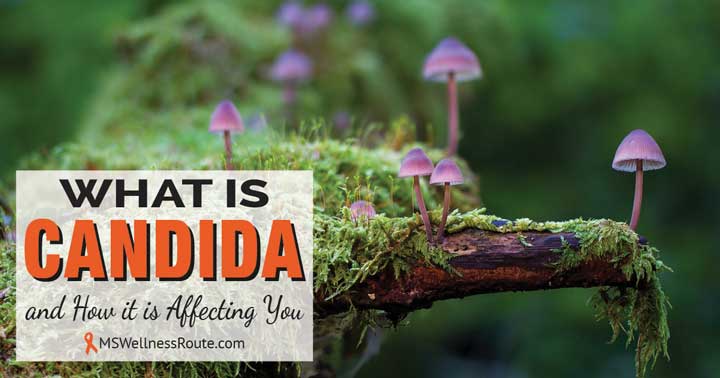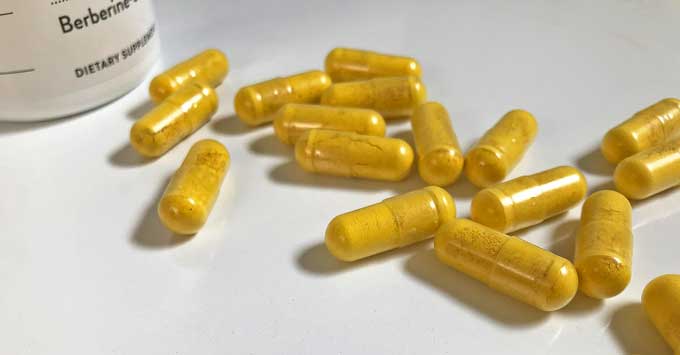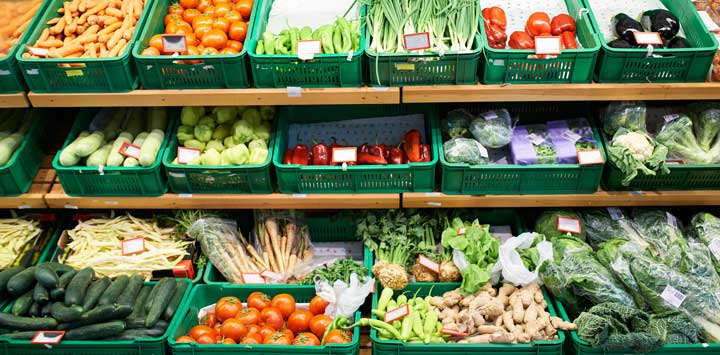Last Updated on November 29, 2023 by Cathy

If you’ve been diagnosed with multiple sclerosis (MS) there’s a good chance you also have Candida albicans. Candida is a fungal infection that’s caused by yeast. Everyone has yeast growing in their body but when it grows out of control it can lead to MS. Conventional medicine doctors don’t see the connection. So they dismiss it as a possible trigger. People with MS have less good bacteria in their gut than healthy people. This allows Candida to overgrow.
Candida albicans in MS patients was significantly more than that of healthy controls
– US National Library of Medicine
I started eating a healthy diet and avoiding processed foods in 2014. After one year I felt good enough to stop all MS medications. But my symptoms didn’t start to reverse until many years later after I started eating a candida diet.
Get a FREE “Foods to Eat & Avoid” at the bottom of this story.
The Connection Between MS and Candida
The medication Metformin can promote remyelination in rats. making it a possible treatment for MS. The drug changes the way the body stores and releases glucose (sugar) like fasting. Metformin is a prescription drug. It works by decreasing the amount of glucose produced to help keep the blood sugar levels down. Basically, by eating a low-carb diet and keeping your blood sugar level – you’re doing the same thing as Metformin.

Berberine is a natural supplement that helps lower blood sugar. It works as well as Metformin without the side effects. If you’re taking other medications it’s best to speak with your doctor first before taking berberine.
What causes candida?
Many things can cause candida overgrowth. Antibiotics do a great job at killing bad bacteria but they also kill the good bacteria. Poor diet, birth control pills, and stress also disrupt the healthy balance of the gut. Sufferers of diabetes are also more likely to have Candida overgrowth. Diabetics either have low insulin or their pancreas doesn’t produce any insulin. Insulin is a hormone that helps keep the blood sugar level.
Candida feeds on sugar. It doesn’t matter if it’s from something sweet that you ate or from stress. Stress produces the hormone cortisol which is our “fight-or-flight” response. It gives us energy by raising our blood sugar.
Symptoms of Candida
Oftentimes, the symptoms of Candida are also symptoms of MS such as brain fog. It’s a good idea to write down all your symptoms before starting a candida diet. Then you can keep track of your progress. Sometimes there will be such a slow improvement you won’t notice the difference. That happened to me. I didn’t realize my severe dry mouth was improving until I saw it written down.
Symptoms of Candida:
- Adrenal fatigue
- Brain fog
- Chronic fatigue
- Constipation
- Digestive issues
- Food sensitivities
- Insomnia
- Leaky gut
- Muscle aches and stiffness
- Nail fungus
- Oral thrush
- Urinary tract infections (UTIs)
- Toxic byproducts like acetaldehyde and mycotoxins
- Yeast infections
Getting Candida Under Control
A poor high-sugar diet is low in nutrients. It causes inflammation allowing Candida to grow. That’s exactly what you need to avoid. Eating a healthy low carbohydrate diet is the best way to get Candida back under control.
If you’re currently eating the standard American diet (SAD) this is going to be a huge change. Avoid grains/gluten, dairy, sugar, conventional meats, and processed foods. It’s best to take it in stages so you don’t feel so overwhelmed.
Check out How To Eat An Anti-Inflammatory Diet To Stop MS for help.
If you’re already eating an anti-inflammatory diet then it won’t be as hard to eliminate a few more foods. When I first started on a candida diet I followed the book Healing Multiple Sclerosis by Ann Boroch. Although, I didn’t follow her diet exactly.
Instead, I combined Ann’s diet with The Wahls Protocol because I thought it was the most nutrient-dense diet. I followed level 3 but didn’t worry about being in ketosis. Three months later my symptoms began to reverse.
Diet for Multiple Sclerosis

The important thing I’ve learned is, that there is no perfect diet for MS. But, you do need to eat an anti-inflammatory diet like the Paleo diet. Chronic inflammation happens when your body is constantly on high alert. Over time it harms your tissues and organs.
Whatever diet works for one person may not work for the next person. Everyone is different and you need to adjust your diet to fit your needs. Remove any foods that your body is sensitive to. Try an elimination diet, that’s how I found out I was sensitive to tomatoes and sweet peppers.
Eat as many vegetables especially non-starchy vegetables because they are lower in carbohydrates. Dr. Terry Wahls recommends 6-9 cups of vegetables each day depending on which level you are on.
3 cups of each:
- Dark leafy greens
- Colorful all the way through
- Sulfur (asparagus, broccoli, cabbage, onions, etc.)
Nine cups of vegetables sound like a lot but it’s not that hard once you get used to it. Smoothies and soups are a great way to get lots of vegetables in one meal. Snack on cucumbers, celery with almond butter, olives, or roasted vegetables.
What Foods to Avoid for Candida
A poor diet is probably the biggest culprit to Candida overgrowth. Avoid added sugars including natural sugars like honey or maple syrup. Candida is a fungus so avoid eating mushrooms or truffles.
Get a FREE printable called “Foods to Eat and Avoid” at the bottom of this story.
Avoid high-sugar fruits like bananas, cherries, and grapes. Instead eat fruits that are lower in sugar such as avocados, berries, lemons, and limes. But, you still need to limit the amount of low-sugar fruits you eat in one day.
It’s recommended to avoid fermented foods for the first three months. Because it can create more histamine in the body. Histamine is an allergy response. Later you can introduce fermented foods but start adding them slowly such as 1/2 tablespoon a day.
Supplements
Take antifungals to break down the biofilms that Candida uses to protect itself. You’ll want to start slow to avoid die-off which can cause flu-like symptoms. Caprylic acid, pau d’arco, garlic, oregano oil, and berberine are great natural antifungals.
Probiotics help build good bacteria. But if you currently don’t take any probiotics or eat fermented foods you need to start slowly with these too. Ann Boroch recommends starting probiotics on the four months of your Candida diet. Trying to get Candida under control can get frustrating. But, if you stay committed you could see some awesome improvements.
Quick Links To Information In This Post:

Foods to Eat & Avoid on the Candida Diet
Resources:
https://www.ncbi.nlm.nih.gov/pubmed/20556470
https://www.ncbi.nlm.nih.gov/pubmed/27061227
https://www.sciencedaily.com/releases/2016/06/160627125355.htm
https://msddjournal.biomedcentral.com/articles/10.1186/s40893-016-0012-0
All information is for informational and educational purposes only. It is not to be construed as medical advice or instruction.





